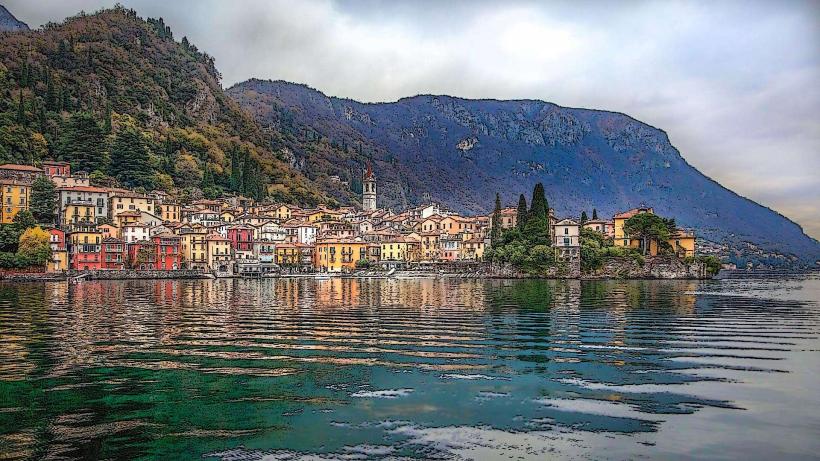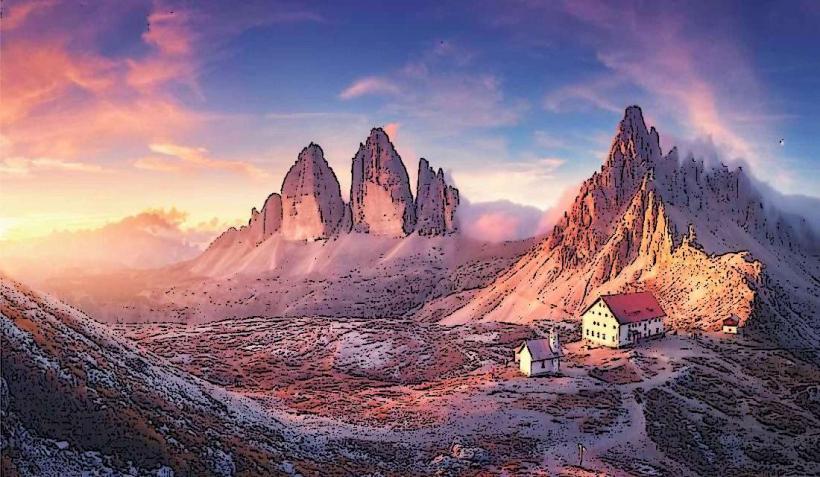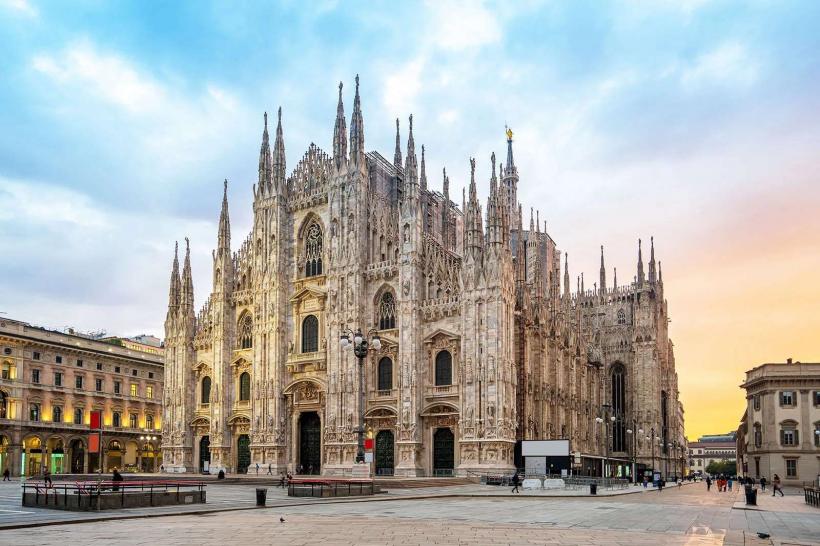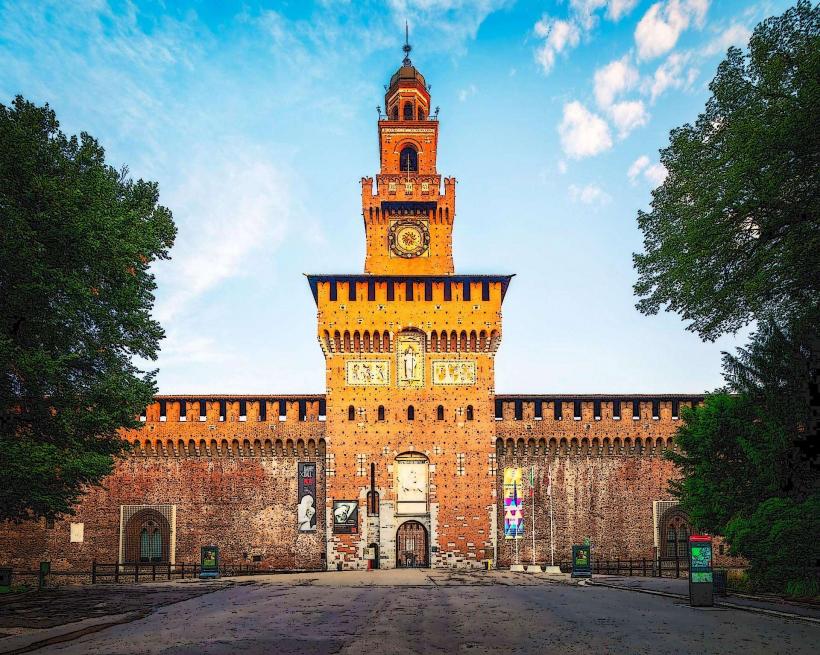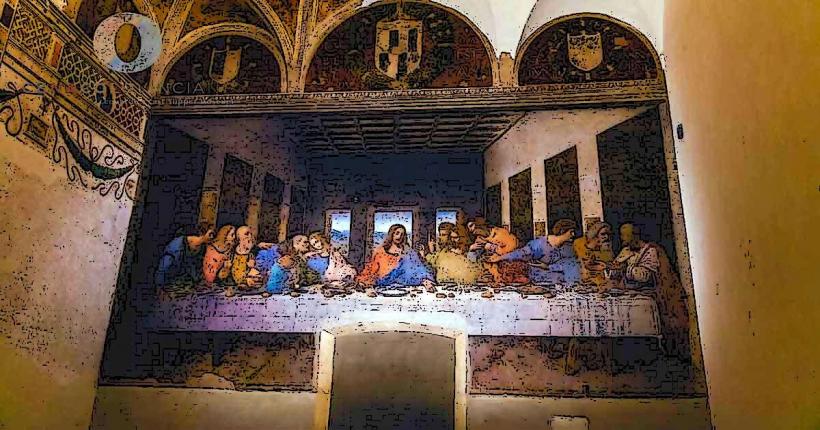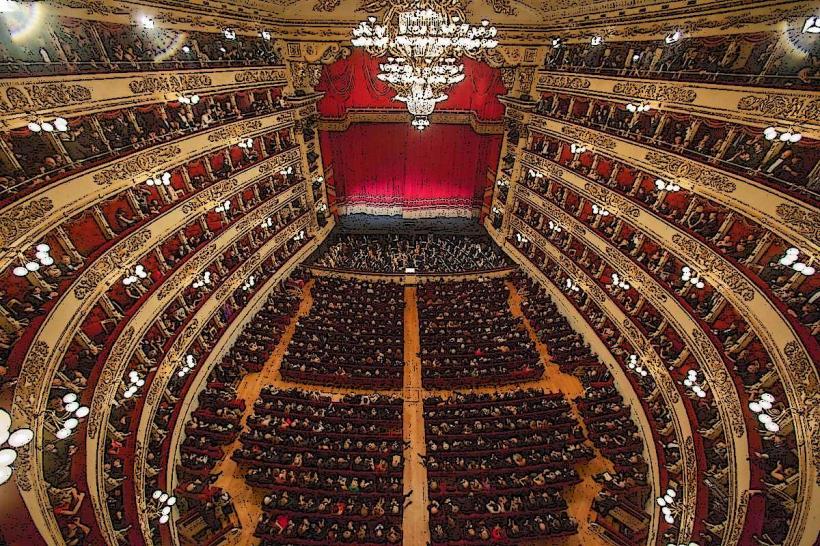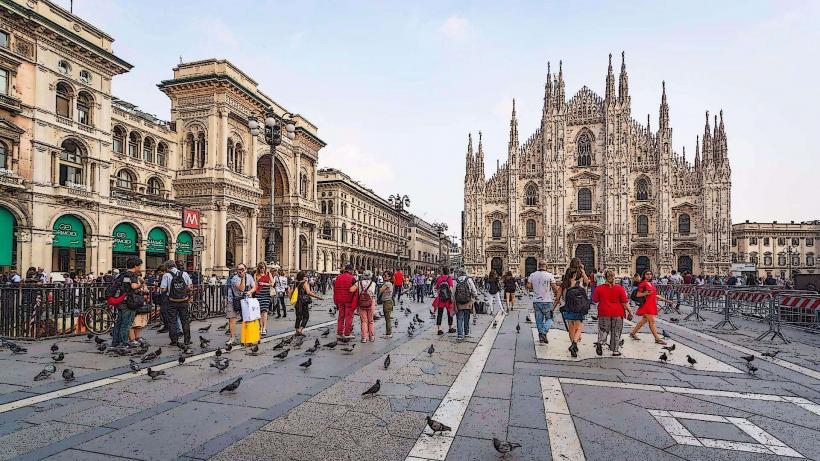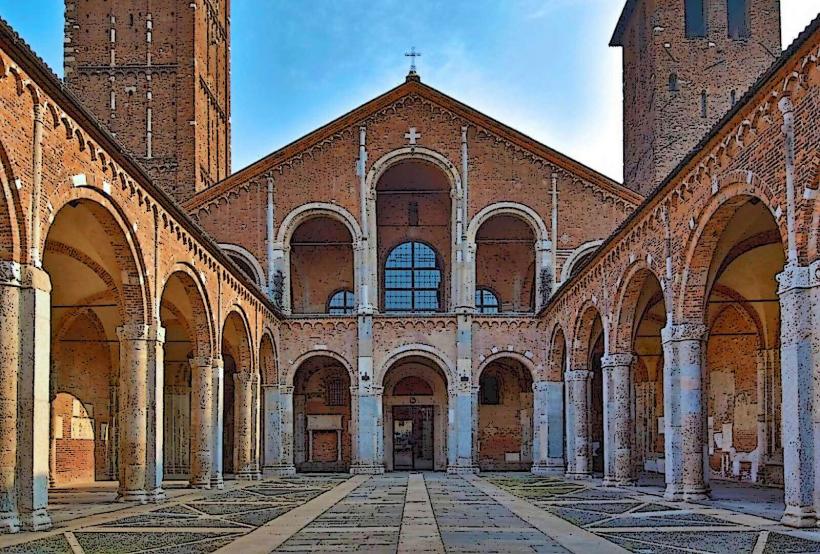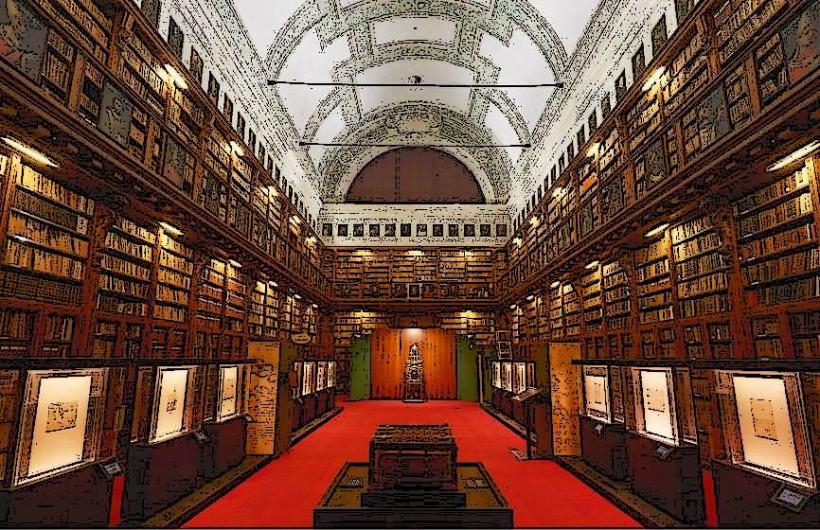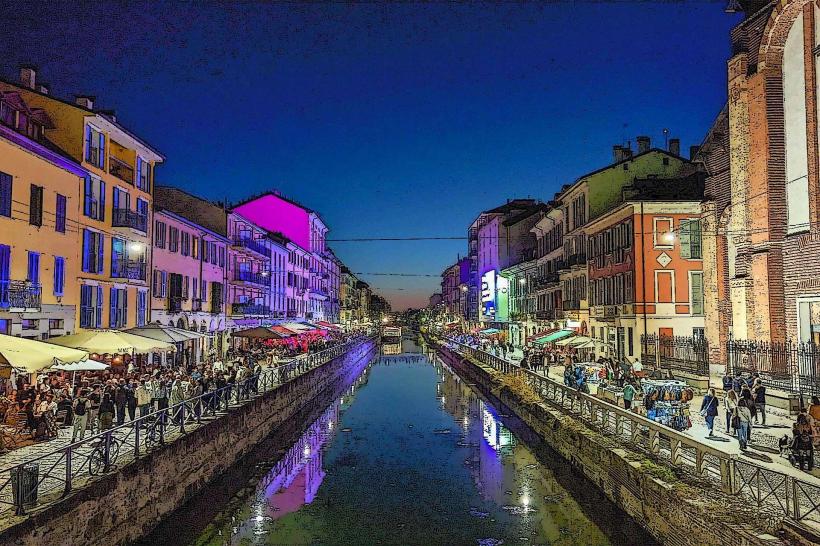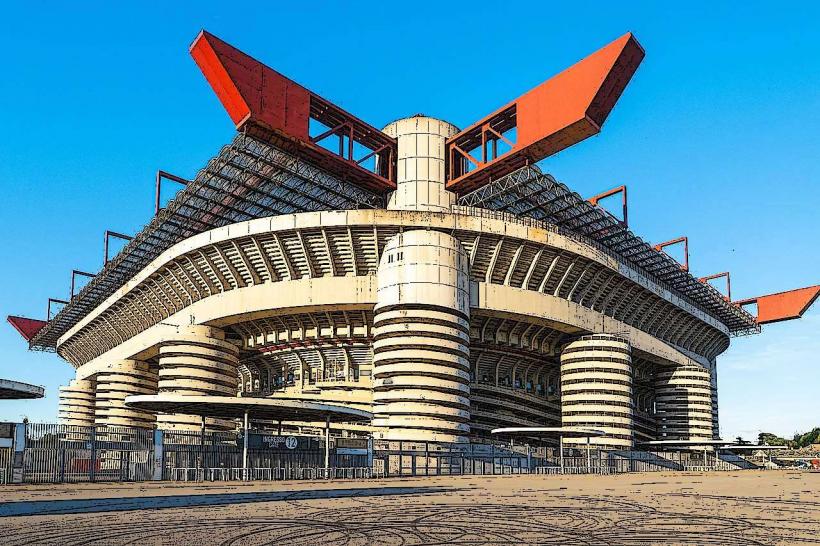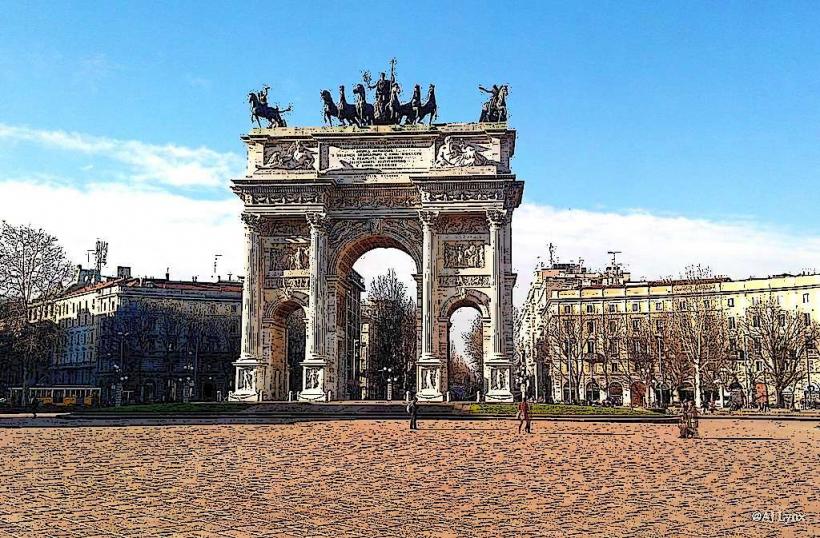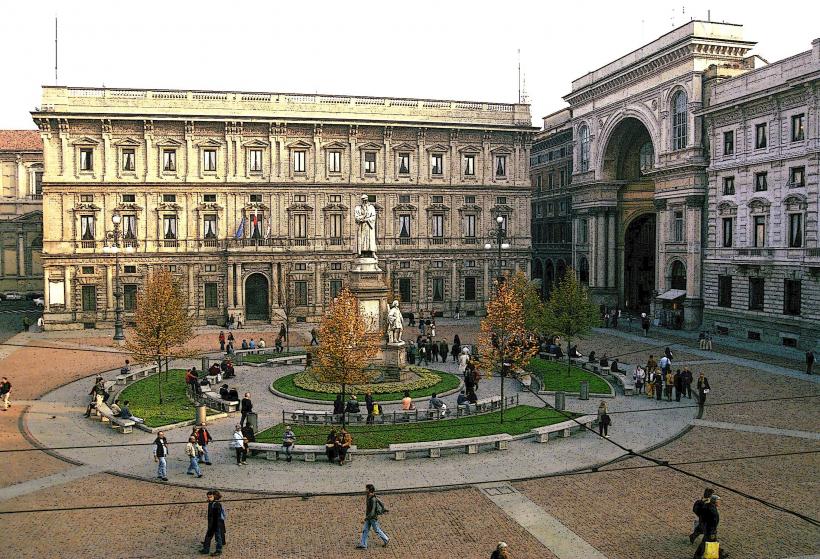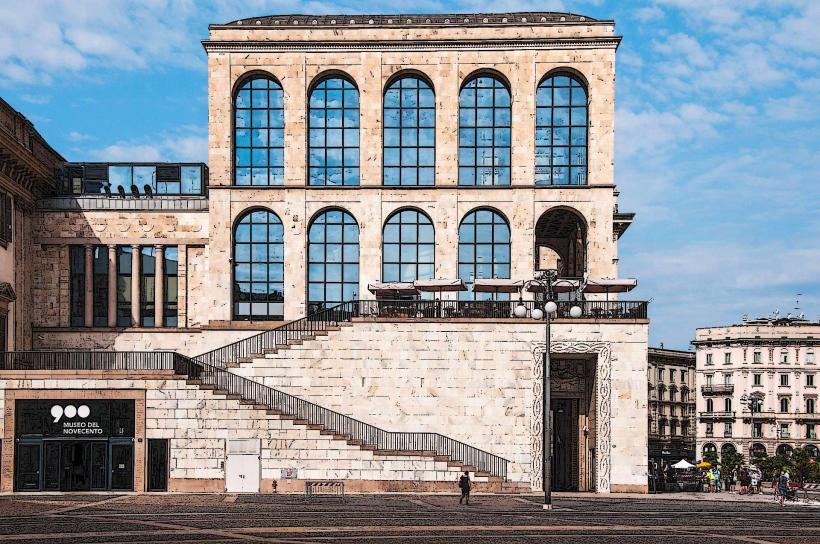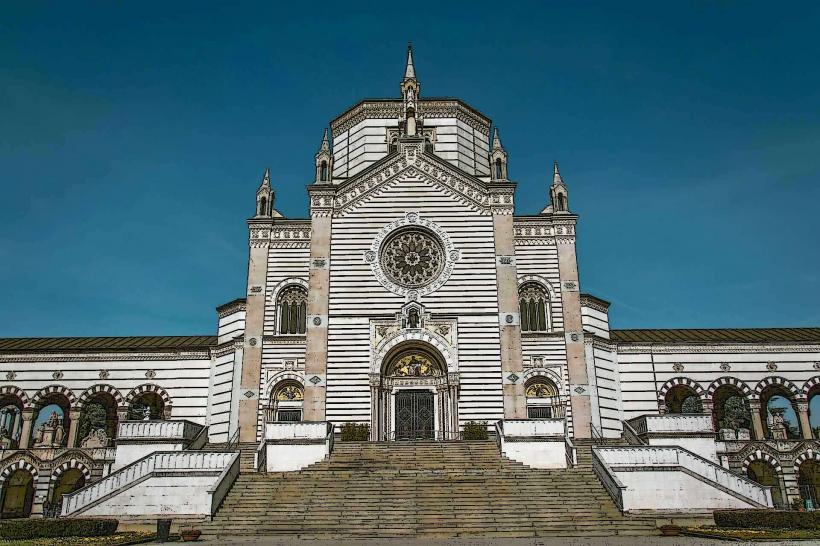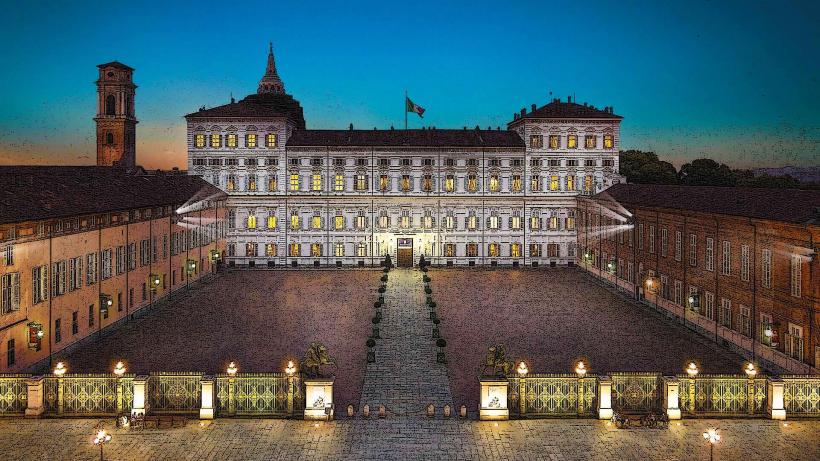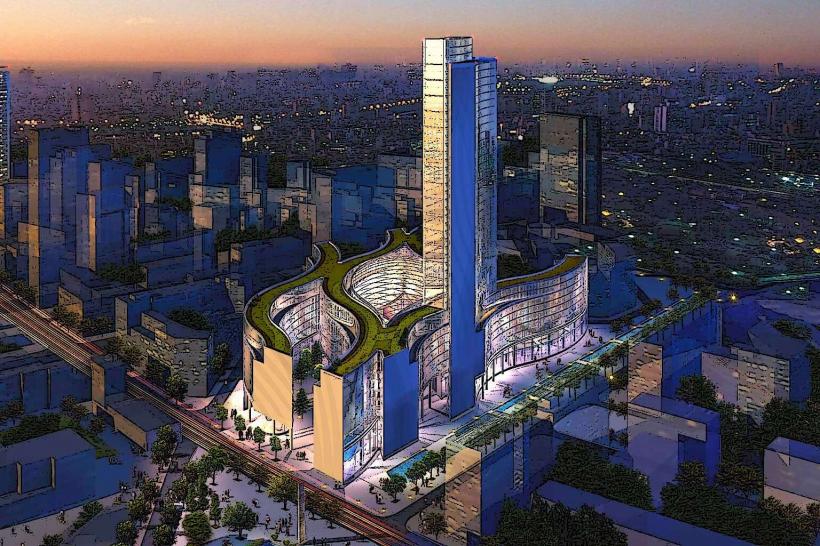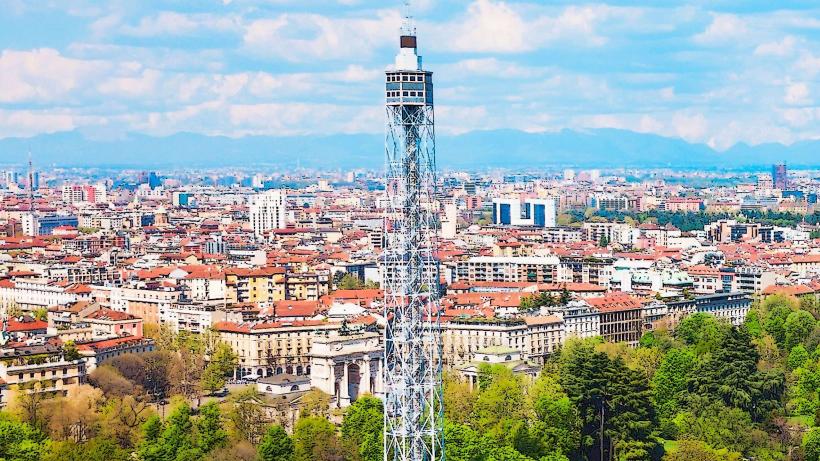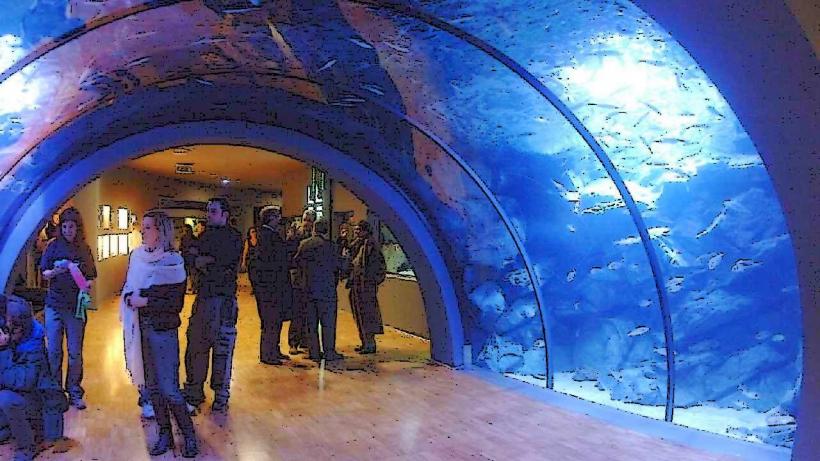Information
Landmark: Galleria Vittorio Emanuele IICity: Milan
Country: Italy
Continent: Europe
The Galleria Vittorio Emanuele II is one of the most iconic and luxurious shopping galleries in Milan, Italy, renowned for its stunning architecture, rich history, and position as a center of Milanese social and commercial life.
1. History and Construction
- Commission: The gallery was designed by the architect Giuseppe Mengoni, who was commissioned by the King of Sardinia, Victor Emmanuel II (from whom the gallery takes its name). It was conceived as a monumental structure to symbolize Milan's importance as the capital of Italy's economy.
- Construction Period: The construction of the Galleria began in 1865 and was completed in 1877. The gallery was officially opened in 1877 to great fanfare, becoming an immediate symbol of Milan's urban sophistication.
- Renovations: The building has undergone several renovations throughout the years to preserve its historic beauty, including updates to its electrical systems, restoration of its frescoes, and careful conservation of its glass dome.
2. Architectural Features
- Design: The Galleria is a four-story, covered shopping arcade that connects Piazza del Duomo to Piazza della Scala. It forms a cross-shaped structure with a glass-and-metal dome at the intersection of the two main passageways.
- Materials and Style: The gallery’s interior is defined by its luxurious materials, including marble floors, mosaic tiling, and glass-and-metal roofs. The combination of neo-classical and Renaissance Revival styles creates a dramatic, elegant atmosphere. The structure is predominantly built of iron and glass, showcasing the industrial advancements of the 19th century.
- Dome: The centerpiece of the gallery is its glass dome, which covers the central octagonal space. The dome is supported by a steel frame and allows natural light to flood the interior, creating a striking and luminous effect.
- Mosaic Floors: The floors of the gallery are decorated with mosaic tiles, showcasing elaborate designs that include symbols of the cities of Milan, Turin, and Florence. In the central part of the gallery is the emblematic symbol of the bull, which is traditionally considered to bring good luck. Visitors often spin on the bull's groin for good fortune.
3. Retail and Cultural Significance
- Luxury Shopping: The Galleria is famous for its high-end luxury boutiques and stores. It houses flagship stores of iconic Italian and international brands, including Prada, Gucci, Louis Vuitton, Ferragamo, and Armani. It is also home to cafes, restaurants, and bookshops that attract locals and tourists alike.
- Cultural Hub: More than just a shopping mall, the Galleria has long served as a cultural and social hub of Milan. It is an important location for Milanese life, offering a meeting place for both tourists and locals. The gallery is often used as a passage for those visiting Milan Cathedral or Teatro alla Scala.
- Public Art: The Galleria is also home to several important works of art, including murals and sculptures that represent various aspects of Milanese and Italian culture.
4. Notable Landmarks within the Galleria
- The Bull of Turin: One of the most famous features in the Galleria is the mosaic of the bull located on the floor. According to local tradition, spinning three times on the bull’s genitals will bring good luck. This tradition has made the bull a symbol of Milan and of good fortune.
- Café and Restaurants: Some of Milan’s historic cafés are housed within the Galleria, such as Caffè Biffi and Caffè Galleria, both of which date back to the early 20th century. These cafés are notable not only for their historical value but also for their stunning decor and role in Milanese social life.
- Teatro alla Scala: At the opposite end of the gallery lies the Teatro alla Scala, one of the world’s most famous opera houses, making the Galleria an important route for theatergoers attending performances at the theater.
- Famous Shops: The Galleria houses some of the most prestigious shops, including the Gucci and Prada flagship stores.
5. Cultural and Social Role
- Public Space: Over the years, the Galleria has been more than just a shopping center—it has been a place for social gatherings, important political meetings, and celebrations. Its role as a meeting point for Milan's elite continues to this day.
- Fashion Icon: Milan is globally recognized as one of the world’s fashion capitals, and the Galleria plays an essential role in reinforcing this reputation. It is regularly featured in international media and has become synonymous with Italian elegance and luxury.
- Events and Exhibitions: The Galleria hosts occasional exhibitions, concerts, and other events, which draw both Milanese residents and international tourists.
6. Visiting the Galleria
- Location: The Galleria Vittorio Emanuele II is situated in the heart of Milan, connecting Piazza del Duomo (home to Milan Cathedral) and Piazza della Scala (home to the famous opera house).
- Opening Hours: The Galleria is generally open daily, with most shops and restaurants opening around 10:00 AM and closing late at night. However, hours can vary, especially for the restaurants and cafés inside.
- Accessibility: The Galleria is easily accessible by public transport, including the Milan Metro (Duomo station), and is within walking distance of many of Milan’s other important landmarks.
- Entry Fees: There is no entry fee to walk through the gallery, but there may be costs for accessing certain stores, restaurants, and exhibitions.
7. Legacy and Influence
- Architectural Influence: The Galleria is a defining example of 19th-century arcade architecture and has influenced the design of similar structures across Europe and the world. Its combination of glass, iron, and marble set the stage for future developments in urban shopping spaces.
- Symbol of Milan: The Galleria Vittorio Emanuele II is often referred to as the “living room of Milan” due to its central location and role in Milan's social and cultural life. It is considered a national treasure and is a symbol of the city’s economic and cultural identity.
8. Conclusion
The Galleria Vittorio Emanuele II is an architectural marvel and a symbol of Milan’s elegance, sophistication, and commercial vibrancy. Its rich history, stunning design, and cultural significance make it one of Milan’s most iconic landmarks. Whether for shopping, dining, or simply appreciating the beautiful space, the Galleria remains a must-see for anyone visiting Milan.

